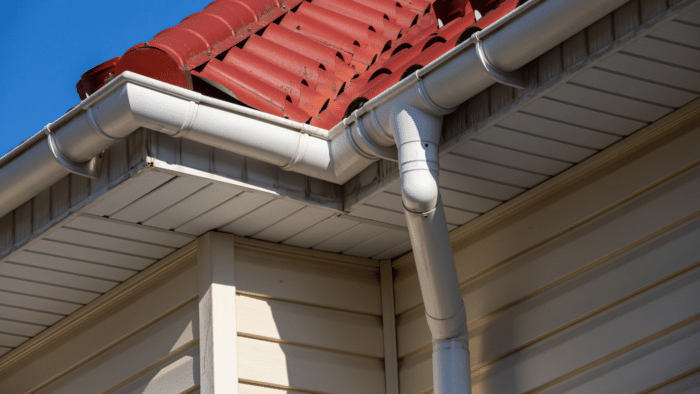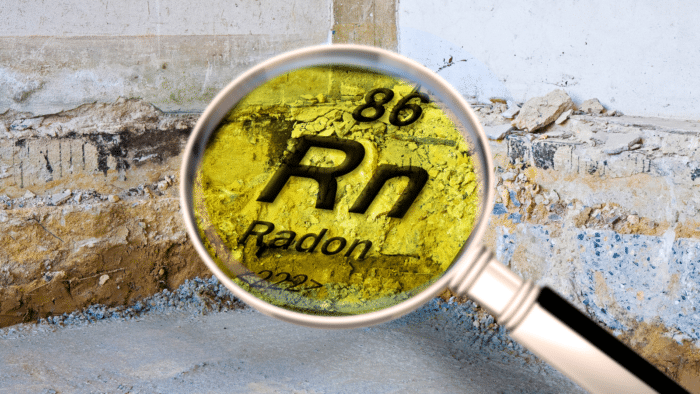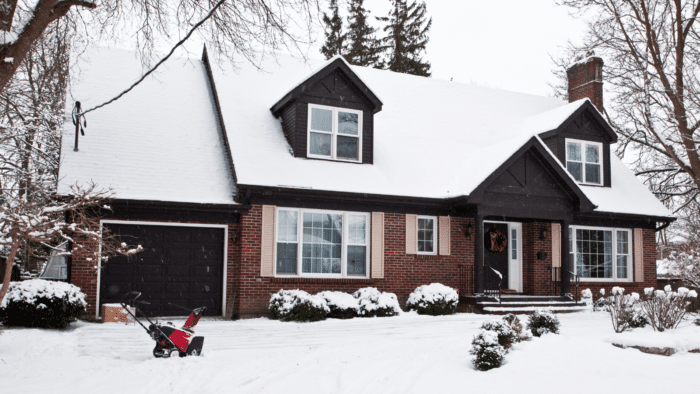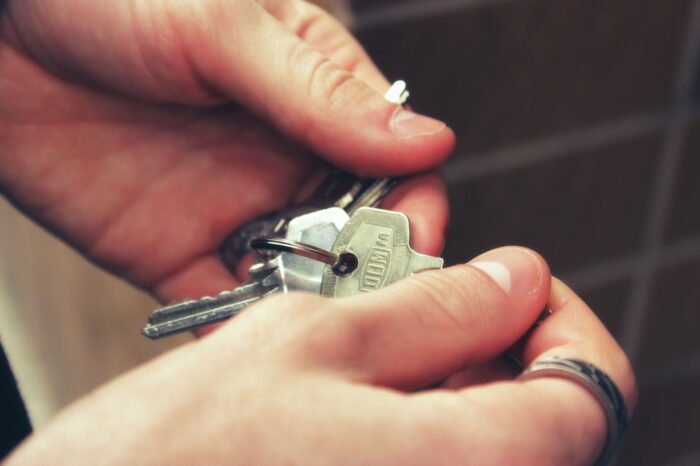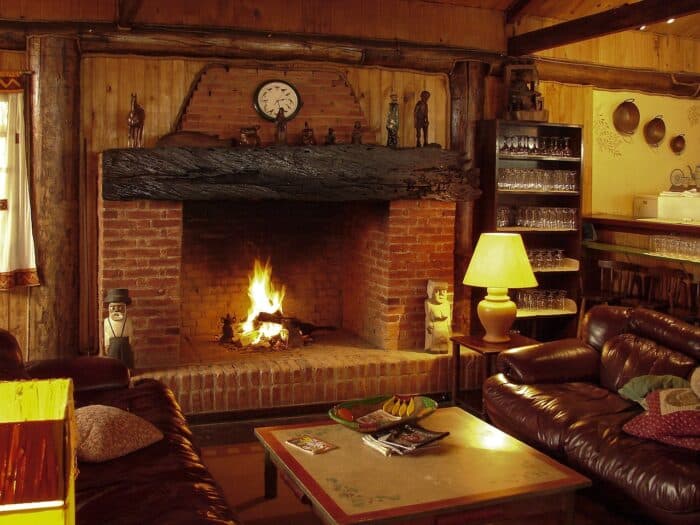Company News
New NAR Settlement Brings Changes
New NAR Settlement Brings Changes to Real Estate Commission Agreements and Home Showing Processes
As part of a recent settlement, the National Association of Realtors (NAR) has changed how real estate brokers in the United States handle showing homes to their clients. In October of 2023, a verdict was finally reached in the case Burnett v. National Association of REALTORS® (NAR) nearly four years after the class action case was filed in Missouri federal court. The case
was brought forth by a group of home sellers against NAR, Anywhere, Berkshire Hathaway HomeServices, Keller Williams, and RE/MAX that claimed real estate commission rates are too high, buyers’ representatives are paid too much, and industry guidelines lead to inflated commission rates. To be entered into the lawsuit, the homebuyer had to state that they did not understand the sale process or know that they could negotiate the commission. Because the NAR and the other defendants lost, they were required to pay millions of dollars as part of the settlement. Real estate agents themselves do not have to pay back any prior commissions.
Additionally, effective August 17, 2024, real estate brokers are required to have clients sign a buyers’ agent agreement (also called buyer agency agreement, buyer-broker agreement, or a buyer representation agreement) before showing any houses. The contract can be for as little as one home to as long as six months (in 30 day increments) and can be renewed as often as needed if you are happy with your agent’s performance. It is important to read the contract thoroughly and ask any questions before signing.
When the agent is formally selected, another contract will be signed before any other homes are shown that includes the agent’s responsibilities and how much they will be paid. While many states already required these contracts, they are now required in all states. At this time, the buyer decides what percent of the sale they want their agent and the selling agent is paid and can request the seller to pay your agent’s commission. The listing agreement no longer determines the Buyers Representation compensation. That fee is now negotiable upfront between The Client and their Brokerage and Agent. The process is spelled out in Addendum X (Cooperating Compensation Addendum) of the final contract.
The real estate agent is also required to disclose to all parties if they are working for both the buyer and the seller.
The new process is expected to have little influence on the buyer’s experience, home prices, or how real estate agencies or brokerages are operated. The buyer will still pay their agent even if the seller refuses to pay. Buyers looking to tour virtually will also be required to sign the contract before the tour takes place.
The NAR believes cooperative compensation benefits the buyer and the seller, with the better negotiator getting the best deal. They plan to appeal the decision. REALTORS play an important role in the home buying process and home buyers and seller should still entrust the transaction with a licensed real estate agent to ensure everyone is represented and the home changes ownership smoothly.
Tips for Military and Job Relocations
Helping Your Child Transition to a New School: Tips for Military and Job Relocations
Back to school time is here and many families use the summer to move due to military or job relocations, so they do not disrupt their children’s school routines. If your child was at the same school for several years and had lots of friends, the transition may be more difficult than if your child is just going into kindergarten or did not have a lot of friends.
Although these tips are geared towards moving at the beginning of the new school year, these tips can be implemented almost anytime during the school year, especially during holiday and semester breaks.
- If in person sign up is available, take your child with you instead of registering your child online. Allowing your child to be a part of the process will ease some of their fears and apprehension.
- If registration is not held at the school, drive past the school a few times so they can see where it is and what size it is. If you see cars in the parking lot, try walking up to the front door, ring the buzzer and see if you can come to the office to introduce your child. Even if you don’t meet your child’s teacher, being familiar with the office staff and principal can be a good first step. If the playground is not fenced off, take your younger children to play one afternoon. If your new neighborhood has children the same age as yours, invite them to a playdate at the school playground.
- Look for parent groups on social media for the school district you moved to and introduce yourself. Ask them what their kids like the most about the school they attend and pass that information on to your child.
- Start talking with your child about going back to school a couple weeks beforehand and ask them if they are nervous about anything. Do not judge them or minimize their fears. Listen to their concerns and ask them about other times they were nervous and what made them feel better. Make sure they do those activities until they are relaxed about going to school.
- Once you find out who your child’s teacher is, send them an email introducing yourself and your child. Ask if there are going to be any other students in their class new to the area and if they can be introduced to each other during orientation or on the first day of school. If there is, let your child know that they are not the only new student and maybe they can have lunch and play together.
- Settle into a back-to-school routine before the first day of school. This will keep your child from dealing with too many new activities at once. Set consistent wake up and bedtimes and have your child read a book or color during the times they will be doing homework. Spend the “school day hours” doing chores, back to school shopping, and learning age-appropriate life skills.
- Encourage your child to call, video chat, email, or write letters to their friends from their old school. This encourages your child to build and maintain life-long long-distance relationships.
- If possible, drop off and pick your child up the first couple of days before sending them on the bus or letting them bike/walk to school. This will not only allow your child to spend more time with you, but will allow school staff to meet you and let you know if there are any issues.
- Make sure your child understands it may take a week or so for them to feel confident and comfortable in their new school. Each day ask your child how their day went and look for clues in their body language that they may not be telling you something. Encourage your child to speak up to their teacher for immediate resolution, but definitely
to you. - If your child still is not adjusting after a month or two, reach out to the school counselor or social worker or a private counselor that understands children.
If you are a military family that moves often, the transition will become easier each time, especially since they keep getting older and their maturity increases.
Credit and Mortgage
Biggest Financial Investment
Making the decision to purchase a home is the biggest financial investment many people will make as an adult, takes a level of dedication and self-control, and years of planning to achieve. The most important factor in what size home you are qualified to purchase is your credit score. A high credit score tells lenders how likely you are to repay the loan and gives you more negotiating power with the seller when it comes to the sale price or other terms of the sale.
Higher Credit Score
A higher credit score makes you a low risk, whereas a low credit score will make getting approved harder and if you are approved you are likely to not receive as large of a loan as you would like and pay a higher interest rate on your loan. Even if you do get approved for a mortgage with a low credit score, you could have to put more money down, pay a higher interest rate, and pay more overall than someone with a better credit score buying the same house. If you are unable to put 20% down, you will be required to pay for private mortgage insurance (PMI), which is an additional monthly cost protecting the lender if you default on the mortgage.
The average age of first-time homebuyers is 36. This means by the time a potential homebuyer has their credit run for a home loan, they have had 18 years to use credit responsibly and get a better rate or use credit irresponsibly and not be able to secure any type of loan.
Many factors can lead to a low credit score.
- Late payments of 30, 60 days or more on credit cards, or current mortgage (just one 30 day late payment can lower your credit score by 30-100 points instantly depending on what the payment is towards)
- Repossession
- Foreclosures
- Bankruptcy (takes 7-10 years to fall off)
- Frequent hard inquiries on credit such as when you apply for a car or other type of loan or credit card (takes 2 years to fall off)
- Medical debt
- Collections/tax liens (takes 7 years to fall off)
-
Student loans (takes 90 days after paying off- these are the only loans that come back from collection)
Fix Poor Credit
To fix poor credit, listen to what your creditor or credit repair professional tells you to do and do that exactly as told. Straying from the plan will set you back to step one and could lead to further damage. Minor credit issues can be combated by establishing new, positive credit and settling bad debt. Settling the bad debt can fix your credit in as quickly as 7 days. Installment loans (such as personal loans) help create payment history but aren’t a tremendous help with increasing credit scores.
Secured Credit Card
If your oldest credit card is less than a year old, opening a secured credit card that reports to all three credit bureaus can help if used responsibly. A secured credit card (such as Ava) functions similarly to a certificate of deposit (CD), where you put a certain amount of money in the account and as you pay your bills you get the money back after the12 months. Asking someone with good credit to become an authorized user on a new account you open and they make payments on what they use can also help build credit.
It is important to keep several things in mind well before you think about taking out a loan for not only your first home, but every loan after that.
- If you know you are going to be late making a payment, call that creditor and ask for an extension ahead of time to avoid a ding on your credit.
- It will take you longer to raise a low credit score than it will to save the funds for your down payment.
- Only time and money can fix bad credit.
- Your mortgage professional cannot get rid of late payments in your credit history.
- A good rental history (paying on time) is a must.
Following these guidelines will help save you headaches when you are ready to purchase a home.
Gutter Guards
Most Important Items
They may not get much attention, but gutters are one of the most important items outside your house. Gutters are attached at the leading edges of the roof on all sides. When heavy rains fall, they collect the water that runs off the roof and direct the water away from the foundation through downspouts that either empty onto the ground near your house, into a rain barrel, or underground several feet away from the house and up through a pop-up drain.
The rest of the time, your gutters are like the junk drawer in your kitchen. They collect everything- leaves, acorns, sticks, pollen, and more. These items keep your gutters from working properly and potentially lead to damage to your entire home, from foundation to roof.
Here are just a few of the ways clogged and overflowing gutters can damage your home:
- Overflowing gutters allow water to pool back onto your roof, causing excessive shingle damage and a higher risk of roof sags, cracks, and leaks.
- Gutters full of debris are likely to sag or break under the weight of the rotting debris, causing repair or replacement of the entire line.
- Large chunks of debris can flow into the downspouts and get stuck in the elbows and seams. This will cause even more water to back up in the gutters.
- Because the water will pool near the home, the likelihood of flooding increases, especially in basements, walkways, driveways, garden beds, lawns, or anywhere else the ground is lower than the surrounding area.
- Water pooled at the base of the house is absorbed by the concrete causing it to swell and crack, making the home unstable.
- When water starts leaking into the walls, and ceiling, or flooding the basement, mold can develop, potentially causing a variety of respiratory issues.
Easiest Way To Prevent Damage
The easiest way to prevent damage to your home from clogged gutters is to have gutter protection systems installed. These systems go by many names, including leaf guards, gutter covers, gutter helmets, or gutter guards. They all do the same thing, which is to keep the debris out of your gutters, reduce maintenance costs, and allow the water to flow through but the junk floats off the top.
The most popular styles of gutter guards are:
- Bottle Brush- The least expensive and easiest to install, the brushes sit in the gutter and do not attach to the roof. Can blow away or be carried off by animals, clog easily, and require maintenance.
- Foam- Also inexpensive and easy to install, these long, dense triangular pieces of foam slide into the gutter system. Water flows through the foam, but some water, plant life, and some debris can still get trapped in the foam.
- Vinyl and Plastic- Similar design to professionally installed gutter covers but can be installed by the homeowner, these guards are less prone to clogging than brush and foam inserts. Easily warped, broken, or bent during cleaning or by weather or heavy debris on top and can fall off.
- Perforated- Often made of aluminum, these guards are rust-resistant and attach to the gutters themselves. Must be professionally installed and removed. Small debris like pine needles can still get in, but heavy rain or good wind can flush the debris out through the downspouts.
- Reverse Curve- These guards have a slotted opening at the end so water goes in and debris goes over the side. These are not appropriate for steep roofs, as there may be too much momentum for the water to slide into the gutters.
- Micro-mesh- The most expensive of the gutter covers, these are made of a fine mesh with a metal structural backing that must be professionally installed. They do, however, filter out almost all debris and last much longer than the other protection systems.
Regular Maintenance Is Still Required
No matter what type of gutter protection you have installed, regular maintenance is still required. If purchasing and installing a system yourself, hire a professional to inspect and clean out your gutters.
Radon Testing
Biggest Safety Issue
When it is time to buy a new home and request a home inspection, the biggest safety issue may not be the uneven sidewalk or termite damage. It may be radon.
Radon is a natural element. The colorless, odorless, tasteless, radioactive gas is formed when uranium decays in soil, rock, and water. The gas rises and is drawn into buildings through cracks and other openings, such as floor drains, sump pits, crawl spaces, foundation cracks, and gaps around pipes and wires. When inhaled, the gas can damage cells leading to lung cancer. It may take years of exposure for the cancer to develop, and smokers are especially vulnerable to developing lung cancer.
The United States Environmental Protection Agency recommends all homes be tested at least every two years for radon gas and estimates that 21,000 deaths per year occur from radon-induced lung cancer. This makes radon the leading cause of lung cancer after smoking.
Radon Levels Should be Consider
Because of the health risks associated with radon, testing and disclosure of radon levels should be considered when buying a home, completing home renovations, and every two years. Since January 1, 2008, Illinois passed the Radon Awareness Act, requiring all sellers of residential buildings to disclose information about indoor radon exposure, but it does not require remediation unless the level is 4.0 picocuries per liter (pCi/L) of air or higher. The average measurement is 1.3 pCi/L in American homes, although no level is safe.
Consult With Your Realtor
Forty-one percent of homes in Illinois have radon levels higher than 4.0 pCi/L. If the home you are buying or selling has high levels of radon, consult with your Realtor about your options. Installing a radon system will lower levels to under the action level (4.0). The most common radon reduction systems involve the installation of a vent pipe and fan system that draws the air from underneath a building and displaces it outside costing between $800 and $1,200.
Effective June 1, 2013, Illinois required all new construction single-family homes or dwellings containing two or fewer apartments, condos, or townhouses to have a passive radon pipe installed by the contractor or subcontractor. If the homeowner chooses to activate the system, it must be done by an Illinois Emergency Management Agency (IEMA) licensed Radon Mitigation contractor. The company that performs the test or your Realtor can provide you with a list of these professionals.
Specialized Tests You Can Request
While anyone can test for radon with a test kit from a hardware or big box retailer, in Illinois, only a licensed technician can use a continuous radon monitor for a certified test. This test shows hour-by-hour levels and the technician is trained in closed building conditions, monitoring weather conditions, and has experience in reading radon reports for validity. When you schedule your home inspection, the Radon Test is one of the specialized tests you can request.
Even if you are not planning on selling anytime soon, if you’re reading this blog and have not had a radon test in the past two years, go to https://www.illinois.gov/services/service.radon-licensed.html and find licensed radon measurement and remediation companies near you. If you are unsure if your home has a radon mitigation system, look in the basement for a pipe labeled RADON on the floor of your basement.
Ellerbrake Staging
Stage Your Home For Listing
How you stage your home for listing pictures and open houses is one of the most important steps to getting as much money out of the sale of your home as possible, especially in a market where buyers are getting into bidding wars for homes in highly desirable neighborhoods.
Staging is a fancy term for replacing, adding, or removing furniture and décor to make your home appeal to potential buyers. Having minimal amounts of furniture helps prospective buyers see the space for what it is and allows them to visualize how their furnishings would fit in the space.
First Thing To Do
The first thing you should do when getting ready to list your home is to clean and declutter. If you are still living in the home until it sells, get a deep clean done by a professional cleaner and keep up with cleaning high-use areas, kitchens, and bathrooms so you are not scrambling the hour before you have to leave for the agent to have the open house. If your home’s interior has not been painted in a few years, paint the rooms a neutral color.
Pack up any personal photos, diplomas, books, and knick-knacks from the bedrooms, living rooms, and foyers. In the kitchen, clear off the counters of all small appliances remove all magnets and children’s art from the refrigerator, and lock up bottles of medicine (over the counter and prescription), In the bathroom, stow away personal care items you do not use. Pack up any drawers or cabinets that you know you will not need the contents of so potential home buyers can see the depth of the storage. Make sure at least one room has an empty closet and others are organized by color since this is a major selling feature in many homes, especially older ones.
Bring in a Professional Home Stager
At this point, you may want to bring In a professional home stager to guide you. Stagers often have a background in interior design. Depending on how the market is where you live, your real estate agent may help with paying for the staging company to move your home faster. The stager will help you rearrange what you have and perhaps swap out some of your pieces for pieces the designer has purchased specifically for selling homes. Once your home sells, the stager will remove the pieces for the next home.
Once those basic items are taken care of it is time to go room by room, starting with the entryway. This is where home buyers will make their first impression of the home. A simple piece of wall art and a sofa table with a lamp or bench will make the space look welcoming and practical.
Make Sure the Walking Paths are Clear
In the formal living room, make sure the walking paths are clear. Find the focal point for the room (usually the fireplace or a large statement piece of furniture) and place a piece of art or mirror above the mantle, a floral arrangement on a tabletop, or a couple of books and a small figurine on the bookcase.
Set the table in the formal dining room with a fully matched set of plates, utensils, stemware, cloth napkins, and a nice tablecloth or table runner, depending on the condition of the table.
Place New, Clean, and White Linens
Place new, clean, white linens on the beds with some bright throw pillows and coordinated duvet. Clear the tops of the dressers and nightstands of personal items, especially jewelry. A comfy chair and ottoman with a blanket in the corner can add to the coziness of a main bedroom.
In every room, if there is recessed lighting, make sure the lights are angled to where you want to draw people’s attention. Make sure all lightbulbs are working and there are table lamps an appropriate size for the room in all rooms that do not have ceiling lights. Do not use air fresheners or scented candles when getting ready for an open house in case anyone who comes through has sensitivities.
Home buyers will want to see the basement if you have one. If it is finished, follow the tips for the living room. If it is unfinished, make sure the lights work and there is a path free of spider webs, hoses, and empty paint cans.
Now that your home is ready to show, relax and let The Ellerbrake Group bring you the best offer!
Make sure you check out this blog on how to make the outside of your home attractive to future buyers.
Winter Home Safety
Keep Your Family and Home Safe
The winter months can bring a host of dangers to homeowners. From the dry, cold stretches that make up most of the season to the brief, but intense storms with heavy snow and ice, there are several things you can do to keep your family and home safe.
- Have your HVAC system serviced. You have probably already run your heat intermittently, but when the temps stay below freezing for days at a time, it will not get much time off. Make sure the filter is clean and snow does not pile up along the compressor. If you have a gas furnace, make sure snow and ice do not pile up under the vents.
- Have your fireplace serviced. Even if you do not like to use it regularly, keep your fireplace up to code and clean for emergencies where you cannot use your HVAC system.
- Check your carbon monoxide and smoke detectors. Working carbon monoxide detectors are the first defense in the event your furnace or other gas appliance begins leaking. Especially when it is already cold and dreary, you might attribute the sudden desire to take a nap from the weather. Your alarm will let you know otherwise, and you will be able to safely get out of the house to call 911.
- Prepare for bad weather before it hits. Make sure your shovels and snowblower are in good working order and you have salt to spread on sidewalks and steps into the home for mail delivery people and emergency responders. If you have pets in your home that need to go out, use pet-safe ice melt (magnesium chloride pellets). Place pieces of cardboard on the grass right next to the sidewalk and carefully remove each piece when it is done snowing so shorter dogs do not get snow on their bottoms.
- Keep pipes warm. Prolonged periods of below-freezing temperatures can cause infrequently used pipes to freeze and burst, especially those located on exterior walls. Open cabinet doors to areas under sinks (make sure any chemicals kids or pets can get into are stored out of reach) and leave the faucet on a slow drip. If the pipes do freeze, thaw pipes slowly with warm air from an electric hair dryer. In an emergency, snow can be boiled and used as drinking water (to kill germs; this will not remove chemicals).
- Do not use stoves or ovens for heating the house. It does not matter if your appliances are gas or electric, using the stove or oven for anything other than cooking is dangerous. Using a gas oven or fireplace for heating can cause the pilot light to go out and lead to carbon monoxide poisoning if the appliance is gas. Electric stoves and ovens are a fire hazard if left unattended and can have the heating element burn out. It is also an energy drain.
- Do not plug space heaters into extension cords. Plugging a space heater into an extension cord that is not UL-certified can overheat the wires and cause a fire. Even if you use an industrial extension cord, do not run the cord underneath through rugs or furniture because it can collect static electricity and catch fire. Only use electric space heaters with automatic shut-off switches and non-glowing elements. Keep at least three feet away from curtains, furniture, or bedding, or water. Do not place it on top of furniture. Dispose of the space heater immediately when the cord shows signs of wear.
- Use candles carefully. Candles can provide some light and heat when used safely. Keep away from drafts, curtains, and papers. Keep candles, matches, and lighters out of reach of children.
- Keep generators outside. Keep covered from getting wet and at least 20 feet away from windows, doors, or vents. Connect to an outdoor, heavy-duty, outdoor-rated extension cord.
- Weatherproof your home. Caulk and weatherstrip doors and windows, cover windows with plastic from the inside, repair roof leaks, and cut tree branches that could fall on your home during a storm.
- Stock your pantry. Keep plenty of room-temperature foods handy that do not have to be kept refrigerated or heated up to eat safely. Also, keep plenty of bottled water to last several days.
- Invest in a humidifier. Dry air can make for dangerous conditions for people with breathing or skin issues during the winter months. Set up a small humidifier in each room that you frequently enjoy. Follow filling and maintenance instructions to keep mold and other toxins from building up and causing worse issues. You may also have to drink extra water if you are in a high-risk group or keep special creams handy to avoid cracked or infected skin.
Once you have your home ready, check on elderly adults and neighbors to make sure they have everything in place for winter weather. Following these tips will ensure your winter is cozy and bright.
The Impact of Smart Home Technology
Rise of Smart Homes
Integrating smart home technology has significantly influenced the real estate market in recent years. Homebuyers increasingly prioritize properties with a roof over their heads and a seamless, technologically advanced living experience. This shift in consumer preferences has sparked a conversation about the impact of smart home features on property values.
Smart homes are no longer futuristic; they are a present-day reality. The array of smart home technologies continues to expand from intelligent thermostats that learn your temperature preferences to security systems you can control with your smartphone. Homebuyers recognize their potential to enhance comfort, convenience, and security as these technologies become more mainstream.
Boosting Property Values
Properties equipped with smart home features often command higher prices in the real estate market. The allure of a fully integrated smart home is a compelling selling point. Smart thermostats, lighting systems, and security features make daily living more convenient and contribute to energy efficiency, potentially lowering utility costs. As a result, buyers are willing to pay a premium for the promise of a home that simplifies and enhances their lifestyle.
One of the key drivers behind the increasing popularity of smart homes is the emphasis on energy efficiency. Smart thermostats, lighting controls, and energy-monitoring systems enable homeowners to optimize energy usage. Homebuyers are attracted to the environmental benefits and the long-term cost savings associated with reduced energy consumption. Real estate listings highlighting these features often stand out in a competitive market.
Security and Peace of Mind
Smart home security systems are becoming integral to modern living. With smart locks, doorbell cameras, and motion sensors, homeowners can remotely monitor and control their property’s security. The sense of control and peace of mind offered by these technologies is a significant selling point. Properties with robust intelligent security systems are often considered safer and more attractive to potential buyers.
While the value of smart home features is evident to many, the real estate industry is still navigating how to appraise these technologies accurately. Appraisers may struggle to assign a monetary value to intangible benefits like convenience and peace of mind. As the prevalence of smart homes increases, the industry must develop standardized methods for assessing and appraising these features.
Future Trends
Integrating smart home technology into properties will likely become even more prevalent. As technology advances, we can expect more sophisticated and interconnected systems. Combining artificial intelligence and the Internet of Things (IoT) will transform how we live and interact with our homes.
The impact of smart home technology on property values is undeniable. Homebuyers are not just looking for a physical space but a lifestyle. Smart home features contribute to this lifestyle by offering convenience, energy efficiency, and security. As these technologies become more standardized and widespread, the real estate market must adapt its practices to assess and reflect these innovations’ value accurately. The smart home revolution is here, reshaping how we perceive and evaluate real estate.
Green For The Holidays
Green Up Your Holidays
The holidays can be a difficult time for any good habit to be enforced. No time for exercise, rich, decadent foods everywhere, family tensions flare, and money run short. One habit, however, is not only easy to keep throughout the holidays but easy to share with everyone you know- the gift of green. Not piles of money, not cans of spinach. Caring for our planet by making responsible choices is a gift that will benefit everyone, not just the people you know. Below you will find some easy ways to not only green up your holidays but green up your life.
Support Your Local Economy
Shop Local. Purchasing gifts that are made as close to where you live as possible (or made by you yourself) will cut down on the carbon footprint left behind by transporting items across the country or around the world. Gift certificates to local merchants are a great way to grow business for a neighbor, support your local economy, and reduce fossil fuel use.
Gift Abroad. For the person who has everything, make a donation to a group such as Heifer International (www.heifer.org) in the recipient’s name. For as little as $20 you can buy a flock of ducks, geese, or chicks, or a whole larger animal (such as a pig or a goat) for as little as $10 to feed struggling families in developing countries. Other international aid groups include UNICEF and Doctors Without Borders.
Save the Environment
BYOB (Bring Your Own Bag). Whether it’s the grocery store, discount store, or the mall, taking your own bags not only saves the environment but saves your body and purchases. Plastic bags are not only produced from dwindling petroleum resources, but end up harming wildlife when they blow into bodies of water from garbage trucks, landfills, or litter bugs. In addition, some stores (Target and Whole Foods) give money back for each reusable bag you bring. A pretty, decorative, cloth bag also makes great gift wrap that the recipient can then use when he or she goes shopping.
Decorate a Real Tree. Decorating a real tree with give your home a pleasant scent for the holidays and give aquatic animals a present after the holidays. Support your local farmer by going to a farm and cutting your own Christmas tree or support a local charity by purchasing a pre-cut tree from a charity such as the Lions Club or the Boy Scouts. In addition, you are reducing the amount of oil used to produce an artificial plastic tree.
Plan Your Trip
Plan Your Trip. Before you head out to do your holiday errands, plan your trip to go the most efficient route and make a list for each place. That way you are not wasting time and gas waiting in traffic or driving out of your way to get from place to place.
Turn Down the Thermostat. If you are the only one at home and you’re going to be cooking in the kitchen for a long time or no one is going to be home for most of the day, turn down your thermostat at 5 degrees. If you have a large house and do not use all the rooms, close the doors and close the vents to those rooms.
Bring Toys To Life. If you are giving battery-operated toys as gifts, give rechargeable batteries and a charger to Mom and Dad. They will never have to buy batteries for the toy and chemicals from discarded batteries will not enter our water supply.
Environmentally Responsible Holiday
Having an environmentally responsible holiday season not only benefits our earthly home, but the physical home we own. Less gifts to clutter the home, fewer plastic bags filling a drawer, and more money to put towards a home improvement project are among just a few of the benefits of a green holiday season.
When the holidays are over, make sure you recycle responsibly and not wishfully. Greeting cards and wrapping paper that have glitter on them are not recyclable. When you are done with your tree, do not put it in a plastic bag on the curb; many communities have drop-off locations in parks where your tree will be given a new life in a lake or chipped up to provide wood chips for park landscaping.
These are just a few ideas for making your holidays and the rest of the year evergreen!
What To Look For When House Hunting
Choosing The Right Neighborhood
Choosing the right neighborhood is just as important as selecting the perfect house. Your surroundings will significantly influence your quality of life, from local amenities and schools to safety and community vibes. So, before you make that huge investment, it’s essential to thoroughly research and consider the area where you’re planning to move. Here’s your ultimate guide to what to look for when hunting for the right neighborhood.
Safety First
One of the foremost considerations should be the safety of the neighborhood. Check crime statistics, speak with local police, and visit the area at different times of the day to get a feel for the environment.
Your daily commute can have a significant impact on your lifestyle. Look for neighborhoods that offer a reasonable commute to your workplace, whether by car or public transportation.
If you have children or are planning to in the future, the quality of local schools is a significant consideration. Research school rankings and visit them to gauge the education your children will receive.
Amenities and Services
Are grocery stores, hospitals, gyms, parks, or recreational centers nearby? The availability and quality of these services can make your life more convenient and enjoyable.
If you rely on public transportation, the accessibility and reliability of these services are crucial. Check bus routes, subway lines, and other forms of public transport to ensure they meet your needs.
Keep an eye on future developments, like shopping centers, public transport expansions, or new schools. These can significantly impact both your quality of life and property values.
Community Vibes
Attend local events or visit community centers to get a feel for the local culture. Are people friendly? Are there community events that interest you? The local atmosphere can significantly affect your happiness in your new home.
While you may be planning to stay long-term, it’s always good to consider the resale value of homes in the area. Look at property value trends and speak with local real estate agents to gauge the area’s potential for growth.
Consider the noise level and overall environment of the neighborhood. Is it a bustling urban area, a quiet suburban community, or a rural setting? Make sure it aligns with your lifestyle and preferences.
Walkability
Walking to shops, parks, and other amenities adds convenience and enhances your quality of life. Websites and apps that score neighborhood walkability can be beneficial in this regard.
Finding the perfect neighborhood involves much more than just driving through it. You need to research, visit, and even speak with locals to understand what life is like there. Use this guide as a starting point in your house-hunting journey, and you’ll be well on your way to finding the perfect place to call home.
Happy house hunting!
Ellerbrake Halloween-Blog
Homeowners Decorating for Halloween
One of the most exciting times for homeowners is decorating for Halloween and seeing all the unique costumes children of all ages wear trick-or-treating. Follow these safety tips to keep children and their parents safe when they come to your house.
Follow These Safety Tips
- Well-lit pathways- Make sure the front of your house and sidewalk are well-lit. Since the nights are getting darker earlier, make sure the bulbs in your path and porch lights are working and your solar lights have the panels clean to fully absorb the shorter days of sun. If they have battery backups, make sure they are in good condition and not corroded. If you don’t have permanent path lights along your sidewalk, try carved pumpkins with tea lights or luminaries, and make sure they are on the outside of the path so dangling costumes do not catch on fire.
- Clear obstacles- Before Halloween night, make sure all hoses are wrapped up or put away, toys are put up, acorns are swept off the sidewalk and limbs are cleaned up from the yard and path area.
- Secure pets- Halloween is stressful for both dogs and cats. Cats may use the constant opening of the door as an opportunity to escape and dogs may bark loudly every time the doorbell rings. Some children may be afraid of dogs. Protect everyone and keep your pets secured in a crate away from the door.
- Decorate safely- Use LED candles in place of open-flame candles in pumpkins, luminaries, or other light-up decorations. Do not drape bushes or trees with artificial spider webs that can trap birds. Also, do not soak pumpkins in bleach to preserve them. Squirrels and other wildlife can become sick when they eat it. When it starts to rot, break it up and throw it in your yard for the animals to enjoy as food sources become scarce. Add an extra spooky touch with Halloween music that is motion-activated as the trick-or-treaters come up on your porch.
- Give out treats other than candy- We are not saying to give out apples and granola bars to everyone, but have some fruit, pencils, or other nonfood items available for kids that may have allergies or special needs.
- Let trick-or-treaters know if you are “open”- If you do not wish to hand out candy to trick-or-treaters, make sure you keep your outside lights off. You still need to make sure your yard and pathways are clear in case kids run through your yard as a shortcut between two participating houses. You can also leave a table of candy near the end of your sidewalk with a couple of solar or battery-operated lights and a well-marked sign telling kids they may take a piece.
- Home security- Make sure all other doors and windows are locked so no one can break in while you are distracted at the front door.
- Dry surfaces- If it is rainy on Halloween, make sure you have non-skid rugs or mats at the top of your steps so kids don’t slip going up or down. Consider additional lighting if it is very rainy or foggy.
Keeping These Tips in Mind
If you are taking your kids out trick-or-treating, make sure you only take them to homes that have indicated they want trick-or-treaters and check their candy when you get home for open or damaged wrappers or candy that has nuts or other ingredients your child may be allergic to. Make sure your kids wear costumes that fit properly and are made out of flame-retardant materials with reflective tape or have them carry glow sticks. Consider face paint in lieu of masks. If your child does not want to go to a specific house or starts feeling uncomfortable once on the porch, skip the house or leave immediately. Be especially careful crossing streets that might have more cars parked on them than usual, even when using a crosswalk. If possible cross in groups.
Keeping these tips in mind will ensure this Halloween is as good as (or even better than) the ones you remember from your childhood. And do not forget to save a piece of your favorite candy for yourself!
Guide to Become a Satisfied Homeowner
Most Significant Financial Decisions Ever
Buying a home is one of the most significant financial decisions ever. It’s not just about finding a place to live; it’s an investment in your future and your family’s well-being. To ensure you make the right move, you need a well-thought-out plan and a solid understanding of the home-buying process. This comprehensive guide will provide valuable advice to help you navigate the journey of becoming a homeowner.
Assess Your Financial Readiness
Before you start shopping for a home, it’s essential to evaluate your financial situation:
a. Budget: Determine how much you can afford by creating a detailed budget that includes all your monthly expenses and savings goals.
b. Credit Score: Check your credit score and work on improving it if necessary. A higher credit score can qualify you for better mortgage rates.
c. Down Payment: Save for a down payment, typically between 3% to 20% of the home’s purchase price, depending on the loan type.
d. Additional Costs: Consider closing costs, property taxes, homeowner’s insurance, and maintenance expenses in your budget.
Get Pre-Approved for a Mortgage
Getting pre-approved for a mortgage is crucial before you start house hunting. It helps you:
a. Understand your budget: Knowing how much you can borrow and what interest rate you qualify for will give you a realistic budget.
b. Make competitive offers: Sellers are more likely to accept recommendations from pre-approved buyers as they show commitment and financial readiness.
Identify Your Priorities and Needs
Make a list of your must-haves and nice-to-haves in a home. Consider location, size, number of bedrooms, and desired features. This list will guide your search and help your real estate agent find suitable properties.
Find a Knowledgeable Real Estate Agent
Hiring an experienced real estate agent is essential. They can:
a. Help you navigate the local housing market.
b. Provide valuable insights into property values and trends.
c. Negotiate on your behalf.
d. Assist with paperwork and closing procedures.
Shop Wisely
As you tour potential homes, keep these tips in mind:
a. Be patient: Take your time with a purchase. Take your time to find the right home for your needs and budget.
b. Inspect thoroughly: Hire a professional home inspector to uncover any hidden issues affecting your decision or the price negotiation.
c. Neighborhood research: Investigate the area thoroughly, considering factors like schools, safety, amenities, and future development plans.
Make a Competitive Offer
Work with your real estate agent to submit a compelling offer when you find a home you love. This includes:
a. Offering a competitive price based on market conditions.
b. Being flexible with your closing timeline.
c. Including a personal letter to the seller expressing your interest in their property.
Closing the Deal
Once your offer is accepted, you’ll enter the closing process:
a. Hire a real estate attorney to handle the legal aspects of the transaction.
b. Conduct a final walkthrough to ensure the property is in the agreed-upon condition.
c. Sign all necessary documents and pay closing costs.
Moving In and Settling Down
Congratulations, you’re now a homeowner! But the journey doesn’t end there:
a. Plan your move carefully, and consider hiring professional movers.
b. Create a maintenance schedule to keep your new home in top shape.
c. Get involved in your new community and make it your own.
Buying a home is a significant milestone in life, and with careful planning and informed decisions, you can make it a rewarding experience. Remember to assess your financial readiness, seek professional guidance, and prioritize your needs when searching for your dream home. By following this advice, you’ll be well on your way to becoming a successful and satisfied homeowner.
Fireplace Maintenance
Keep your Home and Family Safe
As summer rapidly comes to a close, homeowners with fireplaces begin looking forward to long nights curled up in front of the fire with a hot drink and a good read. Before throwing the first log of the season in and lighting it up, there are a number of preventative maintenance tasks that need to be completed to keep your home and family safe all winter long, whether your fireplace is wood-burning or has a gas insert.
Number of Preventative Maintenance
- Inspect and Clean the Chimney- When up on your roof checking your gutters for the fall, make sure you inspect your chimney for signs of damage such as cracks or loose bricks. Ensure the chimney cap is securely attached and free from debris such as leaves or bird nests. Hire a professional chimney sweep to remove creosote buildup, which can lead to dangerous chimney fires.
- Check for Drafts- Drafts in fireplaces can occur when the damper is the wrong size or does not open and close correctly when the fireplace is not in use. If you feel cold drafts, consider installing a chimney balloon or damper clamp to prevent heat loss when the fireplace is not in use.
- Clean the Firebox- If you didn’t clean your fireplace out after your last fire last season, remove all ashes and soot from the firebox using a fireplace shovel and brush. Dispose of the ashes in a metal container, as they can remain hot for hours and pose a fire hazard. Clean the interior walls of the firebox to remove any residue. On a gas fireplace, inspect each log or piece for cracks, holes, or excessive burn marks. Use a paintbrush or soft-bristled toothbrush to dust away debris from the burner unit and inspect each vent hole for any build-up that could clog the flow of gas. Never use water.
- Inspect the Fireplace Grate and Hearth- Clean the fireplace grate is clean of excessive residue using diluted vinegar. Make sure the grate is in good shape. Cast-iron grates are more durable than steel grates. Using a grate allows air to flow better around the fire and keeps the concrete floor of the fireplace from getting cracked and eventually weakening. It is also important to make sure the grate is still appropriate for the type of fuel source you are planning to use. Mesh baskets are best for coal and grates are better for wood. Cracks in the hearth can allow fire to spread to the rest of the room.
- Inspect the Flue- The flue is a pipe made of terra cotta clay or stainless steel that the gas or smoke exits the home through the chimney. Make sure any crumbling or rust is repaired before using the fireplace.
- Clean the Glass Doors or Screen- If you have a gas fireplace, the glass doors need to be cleaned to remove any residue using an alcohol-based fireplace cleaner. Use a wire brush to remove creosote.
- Stock up on firewood- Purchase as much seasoned firewood as you have room for at the beginning of the season, so you do not run out during the coldest months. Seasoned firewood produces less creosote and burns more efficiently than unseasoned wood or paper. Store it in a dry, covered area to keep it from absorbing moisture.
- Test Smoke and Carbon Monoxide (CO) Detectors- Many insurance companies require working smoke and carbon monoxide detectors and Illinois now requires hard-wired smoke detectors or ones with a 10-year battery. Gas fireplaces are CO hazards if there is a leak or the ventilation fails.
- Create a Cozy Fireplace Nook- Make sure furniture, pet beds, pillows, etc. are placed no closer than 3 feet away from the fireplace. Even if there is a screen, embers can fly and catch flammable materials on fire. Decorations on the mantle should not hang off the edge.
- Practice Safe Fire Building- Only allow adults to start a fire. Supervise children and pets when a fire is burning. Use the right kindling and firestarter for the material you are burning and do not overload the firebox. Make sure the damper is fully open before lighting the fire and always use a fireplace screen to contain sparks and embers.
- Maintain Regular Cleaning- If cleaning the fireplace each time you use it is too much, it needs to be cleaned monthly, whether it is wood burning or gas, to maintain efficient airflow.
- Schedule Annual Inspections- This should be done by a licensed, insured, and bonded chimney sweep.
Stay warm and safe!
Now that your fireplace is ready, grab a cup of hot chocolate, a book, and your favorite blanket, and enjoy!
Shutting Down The Pool
Important Considerations
An important consideration for many families purchasing a new home is whether or not it has a pool or if there is room in the backyard to put a pool. A pool is a major investment to your home and your property if it is maintained properly and can increase your property’s value. Otherwise, it is a liability to your property and can bring down your home’s value when you are ready to sell if not repaired.
Key Steps On Shutting Down Pool
As summer comes to a close, it is important to close down your pool correctly so that you do not have any surprises when you get ready to open It next summer and ensure the longevity of your pool. You will also not have to spend as much time cleaning and preparing to open or not being able to open on time because you need maintenance when everyone else is trying to get their pool repaired to open. These are the key steps in a systematic approach to the year-end pool closing process.
- Clean and balance the water. This is the first step to closing your pool and provides the most visible change in your pool. Skim the surface with a large, fine mesh net designed especially for cleaning pools to remove any debris, leaves, insects, and other particles too small to pick up. Brush the walls and vacuum the pool to eliminate dirt and algae. Test the water chemistry and balance the pH (7.2-7.8), alkalinity (80-120 ppm), calcium hardness (180-220 ppm), and cyanuric acid (stabilizer-30-50 ppm) to the levels listed. This will prevent algae and bacteria from growing while the pool is closed.
- Lower the water level. Lowering the water level to below the skimmer, return lines, and jets, and draining the heat pump, water pump, and filter prevents plumbing from freezing. Leaving some water in the pool also helps protect the pool liner from shrinking and cracking and prevents unnecessary damage from debris and harsh weather. It also saves you lots of money when you don’t have to fill the whole pool every year. Your pool should only need to be completely drained and refilled every 10-15 years, but check with a professional first.
- Winterize the plumbing. Blowing out the plumbing lines using a compressor removes any water that might freeze and cause the pipes to break. Then plug the lines with winterizing plugs or expandable rubber plugs to prevent water from re-entering the lines.
- Empty and store equipment. Remove and empty all pool accessories, such as ladders, handrails, diving boards, toys, etc., and store them in a dry, covered place. If you use a pool cover during the summer, clean it thoroughly and dry it thoroughly before folding it and putting it away in a clean, dry place.
- Place air pillows on top of the water then a winter pool cover. Inflatable air pillows under the cover will prevent debris and water accumulation and reduce stress on the pool walls due to ice expansion. The winter cover will keep both debris and sunlight out of the pool which can lead to algae growth. The cover should fit well and be designed for winter use. Secure the cover with water bags or cover clips to keep the cover from flying off and animals from getting in and becoming trapped.
- Regular maintenance. Periodically check the pool during the off-season to make sure the cover is secure and in good condition. Remove any debris that may be on the cover and make sure there is no damage or wear. Periodically check the water chemistry and adjust as necessary.
Hire A Pool Company
If this is your first year as a pool owner or you don’t have the time to close your pool correctly, hire a pool company to come close your pool for you. You don’t want to find out your pool liner is shot or your pipes have burst when you are getting ready to host your first pool party next summer. The money you spend closing your pool correctly at the end of the summer will pay for itself when you do not have to replace plumbing, the liner, equipment, etc.
Choosing Siding For Your Home
First Things to Notice
One of the first things that people notice about the exterior of your house is its color and the material. While it is difficult to convert a house with siding to brick or stucco or vice versa, it is possible. Choosing the correct siding for your home will not only help (or hurt) your curb appeal but can impact your energy costs.
Each material has its own benefits and drawbacks, as described in the rest of this blog.
Before deciding on a material, it is important to determine your budget, not only for the actual installation, but maintenance, upkeep, energy savings, and resale value if you are rehabbing the home. While the siding may be less expensive at purchase, it may be more expensive to maintain.
Types of Material
Plank siding comes in three different materials: vinyl, wood, and aluminum. Vinyl is the least expensive to purchase/install if you are building new or replacing plank siding, but it is not durable and cannot be painted when it fades, lowering your home’s value as it ages. It can also be easily damaged by hail, melts easily if there is a fire nearby, and its use is restricted in older neighborhoods. Another type of vinyl siding is insulated vinyl siding, which has expanded polystyrene foam built into the ridge of the panel.
Aluminum siding is also less expensive and is a natural alternative to vinyl siding that can be recycled at the end of its lifespan. Unlike vinyl siding, aluminum can be painted, but is also susceptible to hail damage.
Wood siding is a natural and durable alternative as long you maintain the paint or stain and have regular termite control treatments. It is more expensive but will last more than a lifetime if maintained. Engineered wood looks like real wood and is less expensive but is prone to mold and mildew damage if there is moisture behind the siding.
Stucco is a mixture of lime or sand or cement and cement that is spread on a flat as a paste and dries into a firm surface. This is not a good choice for rainy or humid areas because it is porous and absorbs the water.
Brick siding is the most durable and long-lasting, but also the most expensive, whether building new or retrofitting your existing home. The color can vary depending on the type of clay used, is resistant to fire, and easy to maintain. Real brick is also energy efficient and eco-friendly. Faux brick panels do not have the same benefits, but also do not have the disadvantage of mortar damage in harsh environments.
As mentioned with several of the materials above, you need to take into consideration the climate where you live. Here in the Midwest, aluminum and vinyl siding and stucco are not suitable options, even though many homes are built with them. If you live in a densely spaced neighborhood, brick is safest, with wood being worth the investment everywhere else.
The overall beauty of your home’s exterior is also an important consideration. If you are someone who likes to have the most up-to-date colors on your home, vinyl siding will not work for you, nor will brick (even though painting brick is trendy currently). Also consider the exteriors of the other homes on the street. If most of the homes are brick or stone, a home with plank siding is likely to look out of place.
Energy Efficiency
Energy efficiency is also crucial to think about when building or residing in your existing home. Insulation types and values vary between materials, so ask about the R-value (resistance to heat flow) when selecting siding.
Durability and Maintenance
Durability and Maintenance are important considerations, especially if you are planning on living in the same home for many years. How much time and effort are you willing to invest in maintaining the appearance of the siding, such as painting, staining, sealing, or power washing (especially if you go with a light color).
In many communities, older neighborhoods and subdivisions with Homeowners Associations (HOAs) put restrictions on the types of materials that can be used on the outside of the house. Older neighborhoods typically require real wood siding instead of vinyl or aluminum and HOAs may require a certain material such as stone or brick of a specific color.
Many siding manufacturers offer warranties. Try to find one with a more extended warranty period so you can be confident in the quality and longevity of the siding.
Having your siding professionally installed ensures it is done correctly. Improper installation can lead to issues like water infiltration, decreased longevity, and void the warranty.
Many people are purchasing products based on their environmental impact. Some materials are recyclable, such as aluminum siding, others are damaging to the Earth, such as stone extraction, and others such as vinyl siding, leave a large carbon footprint.
Choosing siding for your home is a long-term investment. By doing your research, you will be satisfied for years to come.
Shopping For A House Out Of Area
With Scott Air Force Base in our backyard, we have lots of clients that are not able to look at homes before their transfer in or out of the area. Thanks to improvements in technology, it is easier to look at a variety of homes and close the deal ahead of time, without having to move into an apartment or hotel temporarily. At KW Williams Ellerbrake Group, we understand the stress of moving to a new area and not knowing anything about the neighborhoods or schools. Our staff lives in the areas we sell homes in and has relationships with realtors in other markets to make sure you get the best buying and selling experience.
Familiarize yourself with the area: As soon as you find out you are moving to the O’Fallon, IL area, make sure you check out the local Chamber of Commerce websites, visitor bureau websites, and community websites so you can narrow down your search. Some are listed below.
- O’Fallon-Shiloh Chamber of Commerce- https://ofallonchamber.com/
- Metro-East Regional Chamber of Commerce (Fairview Heights and Swansea)- https://metroeastchamber.org/
- The Greater Belleville Chamber of Commerce- https://www.bellevillechamber.org/
- Great Rivers and Routes Tourism Bureau- https://www.riversandroutes.com/
- Discover Downstate Illinois Tourism Bureau- https://www.downstateil.org/
Our website, ellerbrake.com, includes basic information about several of the communities in our area, as well as links to additional resources.
Set a budget: Depending on where you are moving here from, you might find the prices in Madison, St. Clair, and Clinton counties in Illinois are less expensive for the same quality home you might find elsewhere, with a lower cost of living. Use the calculator on ellerbrake.com to figure out what the mortgage payment is for some of the homes we have listed to give you an idea of what you can afford.
Secure financing: With improved online security, everything your mortgage lender needs to get you qualified, such as income statements, bank statements, and identification can be safely submitted no matter where you are in the United States. Getting pre-approved for financing will help you narrow down the properties you look at instead of looking at homes that are more than you can afford. Many mortgage lenders also have access to special financing programs for active military and veterans. Getting pre-approved also speeds up the closing process. Ask your Ellerbrake Group Realtor for a list of preferred mortgage lenders.
Make a “Wish List”: Before you look at our listings or any others, make a list of what amenities you want in your new home. How many bedrooms and bathrooms do you need? Do you want to live near the school your children would attend? Are you going to be cooking or entertaining a lot, or is an older kitchen good enough? Do you want a pool? Fenced in back yard? Land? Be realistic about how long you will be living in the area. If your job (military or civilian) requires you to move frequently, Keep your list simple so when it is time to move, you can sell quickly.
Ask for a “Virtual Tour”: Advancements in technology now make it possible for our Realtors to take you on a video walk through of the house, either recorded or live through FaceTime or Zoom. We will answer your questions during the walk through and our agents will point out anything additional that could be an issue so we can address it on your behalf before closing.
Request a home inspection: Once you have narrowed your search down to “the one”, we will refer you to one of our preferred home inspectors to thoroughly evaluate the property and provide you with a detailed report. We will go over the report with you to find out what repairs you want to negotiate into the deal or questions you have about the report.
Submit an offer: Your Realtor at The Ellerbrake Group will guide you through the process of negotiating the price and the terms of the purchase agreement. Your Realtor will act as your representative and protect your interests.
Closing: Your Ellerbrake Group Realtor will help you coordinate the necessary paperwork and work with a local title company. Many title companies and mortgage companies now offer remote closings with electronic signatures and wire transfers. This can be planned as close to your moving date as possible if you don’t need repairs before moving in.
Whether you are buying a new house from across town or across the country, the experts at Keller Williams Ellerbrake Group will make sure you get exactly what you are looking for hassle free. Start the process at www.ellerbrake.com.
Real Estate Investment
With the residential real estate market running on low inventory, you might be wondering if trying to find a single-family home or duplex to rent out is a good idea. Below are some things to think about to determine if this is a good time to invest.
- Evaluate your financial situation. Purchasing real estate, even for your own personal use, requires a significant upfront investment, including a down payment, closing costs, and ongoing expenses such as property taxes, insurance, maintenance, and repairs. Do you have the funds to put into additional properties without your primary residence and other daily needs suffering? Is your credit score strong enough for you to get a loan with a good interest rate?
- Consider your long-term goals. Rental property can increase in value over time and provide a steady stream of passive income through rental payments. If your goal is to build wealth through real estate, investing in rental property might help you reach those goals. Investing in real estate is not a good investment for those looking for quick returns or have a low tolerance for risk and should seek other investment options.
- How much time are you willing to put into management? Managing rental properties requires time, effort, and knowledge of such issues as tenant rights and other legal/financial issues. Do you want to take on the responsibility of finding tenants, dealing with maintenance issues, collecting rent, and handling legal and financial matters, or are you willing to pay a fee to a property maintenance company to handle these issues for you? If you have the skills or are willing to learn, dealing with these issues may be a rewarding experience for you.
- What is your local real estate market? This is one of the most critical issues to be considered, and it is not one that you have any control over. Do thorough research of the local real estate market to determine what the demand is for rental properties in the area you are considering. Job growth, population trends (college students, new families, retirees), and proximity to amenities (parks, stores, schools) can determine the demand for rental housing. Analyze rental rates and vacancy rates to estimate potential rental income and assess the profitability of your investment. This can be done by a search of classified ads or driving through neighborhoods you know to be mostly rentals. If you have friends or family renting in the area you are looking into purchasing real estate, ask them if they are satisfied with the condition of the apartment they are renting and the amenities they are getting for the price. If the market conditions are favorable and show potential for growth, owning rental property could be a lucrative opportunity.
- Risk assessment. Like any investment, rental property carries risks. Economic downturns, changes in housing regulations, property damage, and difficult tenants are some of the risks that come with owning rental property. It is important to have contingency plans and financial reserves to reduce these risks. Adequate insurance coverage is also not only crucial to protect your investment, but can protect you from lawsuits from your tenants should something happen to the property or them. If you have a solid plan in place to deal with the risks, the benefits to owning rental property can outweigh the risks.
- Evaluate your personal skills and strengths. To be a successful landlord, you must possess excellent communication skills, be able to negotiate disagreements, and be able to use excellent problem-solving skills quickly. You also must be able to address maintenance issues promptly and responsive to tenant concerns 24/7. Some knowledge of real estate laws and local regulations/ordinances is also beneficial. If you do not have these skills or are not willing to learn them, you may consider hiring a property management company.
- Remember the tax benefits. Owning rental property can provide tax benefits. Although rental income is taxable, mortgage interest, property taxes, maintenance expenses, and depreciation can be counted as tax deductions. Consult with a tax professional to understand the specific advantages and implications of owning rental property in your area.
With planning, owning rental property can be a major source of secondary income. By following the guidelines above, you can make an educated decision about whether purchasing rental property is a good decision for you at this time. If you do not possess all these skills or cannot meet these conditions at this point in your life, at least you know what you need to work towards to be a successful rental property owner. Whether you are unsure about the best course of action or ready to jump in, call Ellerbrake Group Real Estate and we will help you.
Back Yard Entertaining Safety
One of the advantages to having a home of your own is the ab
Make sure the area is well lit: Solar lights along all the paths and steps will ensure no one has a misstep after the sun goes down. Fairy lights or lanterns strung above your patio or deck add ambiance. Tiki torches of citronella around the perimeter of your outdoor area will keep mosquitoes away.
Keep a cooler of nonalcoholic drinks in a shady spot: Keeping some water, soda, lemonade, and ice tea in addition to beer and wine will ensure your guests stay well hydrated and drinks will stay cooler longer. Your air conditioner will also thank you because guests will not be fanning the door going to your kitchen all the time.
Provide shelter from the weather: Pop-up thunderstorms can be dangerous if you have lots of people gathering outside. Have a radio or app on your phone that can give up to date weather alerts and be ready to move everyone in your home should severe weather warnings be issued for your area. A gazebo or tent can provide shelter from the heat or a non-severe rainstorm pops up. Keep a few extra umbrellas on hand for lighter showers when people can still sit or stand around and talk while having a drink.
Check your yard ahead of time for hidden hazards/obstacles: You may know that some of your stepping stones are loose or wobbly but your guests do not. Make sure your stones are even and mildew free. Rocky or slick stepping stones can cause a person that is not expecting it to fall. A little sand under each stone can even things out and a mixture of water and vinegar sprayed on the stones can kill mildew. Tree roots hidden by grass or divots from animals digging can also lead to falls, especially on a hillside.
Monitor your pool closely: A pool party can be fun, but you as the pool owner need to make sure basic safety measures are in place before an accident can happen. Make sure ladders, handrails, and steps in and out of the pool are secure. Once you have checked your pool’s chemicals to make sure it is sanitary, but not over chlorinated, make sure your chemicals are locked up. Have an empty cooler on a nearby table to keep electronic devices not only dry, but keep them from overheating in the sun. Have pool noodles, floaties, and other assisting devices in the water for anyone that needs help in the water. Always have an adult present near the pool, especially when children are present. If guests are not allowed to use the pool, make sure the fence is locked and the ladder put away for above ground pools.
Attend the grill at all times when grilling on an open flame: Grill safety begins with a well maintained and cleaned grill used away from trees, weeds, and buildings. Do not grill on windy days. Even flat top grills can be dangerous since the surface can stay hot even when cooking is finished. Keep a fire extinguisher near and pets and children away from the grill.
Keep mosquitos away: Mosquitoes can breed anywhere there is even a capful of standing water, so make sure your yard is clear of old tires, empty flower pots, trays, etc. If you have a pond, make sure it has an aerator or you maintain it with mosquito dunks that kill the mosquito larva. Citronella candles, mint and lavender plants, and other natural pest control remedies will help keep other annoying flying bugs away without hurting humans or pets.
Make sure playground equipment and games are in good condition: Peeling paint, sharp edges, and fraying ropes can be dangerous. Make sure rubber mulch or other soft material is under the equipment and is spread out under the swings. This will help with water puddling and breeding mosquitoes.
Following these tips will ensure everyone wants to keep coming back to your home for summer get-togethers.
Energy Upgrades To Improve Home Value
Energy-efficient upgrades are a good investment not just for saving money while you live in your house, but can increase the value of your home for potential buyers when you are ready to sell. A recent study by the National Association of Homebuilders (NAHB) found nine out of ten home buyers prefer a home with energy-efficient features and lower energy costs than a lower priced home without the upgrades. Additionally, over half of real estate agents report their homebuying clients are interested in sustainability. Energy-efficient upgrades can boost a home’s value in five ways.
Reducing Energy Costs Can Save Money
Reduced energy costs- When making energy efficient upgrades, the costs you put into the upgrades will quickly be paid off by the money saved in energy costs. Energy Star estimates that Examples of inexpensive ways to reduce your home’s heating and cooling costs include caulking doors and windows for air leaks and replacing old appliances, (including your HVAC system) with new Energy Star Certified energy efficient appliances (use 40% less energy); these appliances are more likely to be electric than gas, which is an additional savings.
Looking to Increase Your Home’s Value?
Larger investments that save more in energy costs and increase home values even more include insulating the attic and walls and installing energy efficient windows and doors to prevent air leaks. Just insulating the attic can save homeowners 15% on energy costs. If you are a long-term planner, getting solar panels will save you approximately $500 per year on energy costs and increase the sale price of the home by as much as $10,000, depending on what the solar market is in your area.
Reducing Air Leaks
Reducing air leaks allows the heat to stay in during the winter and the cool air during the summer, allowing the heating and cooling systems to maintain a comfortable temperature with less work. The less your HVAC system has to work, the longer it will last with little maintenance besides seasonal routine maintenance such as changing your filter and washing the compressor unit. When you invest in these upgrades, you are investing in the overall quality of your home. Energy efficient homes cost less to maintain, which can be a major selling point as energy costs continue to rise.
Increased comfort- Even with the above energy-efficient upgrades, a new HVAC system will allow for an even more comfortable living environment. Homes that are more comfortable to live in are more valuable than those that are not. Homes that provide for a higher quality of life sell for more than homes that are not as comfortable to live in.
Improved air quality- When your home does not have air leaks and the HVAC system can run more efficiently, the air quality in your home naturally improves. Adding a high-quality air filter to your HVAC system can help remove more airborne particles from the air, such as pollen, dust, and allergens. HVAC systems also help control excess moisture that can cause difficulty in breathing for those with COPD or other breathing ailments and mold that can cause serious health problems. Indoor air quality is becoming more and more important for people, especially in the post-COVID era when people realized how easily viruses are spread through poorly ventilated buildings.
Replacing The Garage Door Can Improve Insulation
Another energy efficient upgrade that can improve indoor air quality and reduce heating and cooling costs is replacing the garage door if you have an attached garage. Energy costs can drop by as much as 15% with a new garage door, plus the increase in your home’s value will almost pay for the garage door.
Reduced maintenance costs- A home that is energy efficient has lower maintenance costs. A home that does not need energy-efficient upgrades after closing is likely to sell quicker than a home of the same size and amenities that needs new windows, HVAC, or other major appliances.
Increase Property Value
Increased property value-The biggest reason to make energy-efficient upgrades before selling is the increased property value. A home that has energy-efficient upgrades can be worth up to 10% more, depending on factors such as the area the home is in, the cost of energy in the area, and what upgrades have been made.
Making energy efficient upgrades well before you get ready to move will save you money that can help you enjoy the house you are in until you are ready to move. Before deciding how many upgrades make sense, conduct a cost vs. benefit analysis to see which upgrades are worth the investment.
Spring Home Repairs To Prepare Your House For Selling
Many homeowners are beginning to start their spring cleaning lists and decluttering for a fresh start after a long winter. While cleaning your home inside and out, it is a good time to check your home for wear and tear inside and out that may have occurred during the harsh winter months. Checking for damage while it is still minor can save you lots of money than waiting until the damages grow. It is always best to have a handyman, contractor, or other professional do a detailed inspection of the problem area and give an estimate with details of what the repairs entail.
Here are some of the issues to look for when you give your home a good clean.
-
- Openings in homes where birds, bats, mice or insects can enter. Insects can get into the home in a variety of ways: cracks in the foundation, missing caulking around the windows, rotted wood around windows and door frames, and more. Birds can get into the home in a variety of ways, such as open windows without screens, under loose fitting doors, gaps around conduits, and utility vents. Bats can fit in a hole as small as a dime (3/8”) and often enter through chimneys, louver (attic) fans, air intakes, exhaust vents, openings around plumbing, power or cable lines, spaces around doors and windows, and anywhere exterior siding has shrunk, warped, or loosened. Once you fill in all of the holes these critters are coming in, you will also see a reduction in your energy costs because if the birds, bats, and insects can get in, your air conditioned and heated air can get out.
- Caulk and glaze around windows and doors. Even if you do not have proof of unwanted intruders, a proper seal can help keep mold spores, pollen and other dust out of your living space while enhancing the energy efficiency of your HVAC system. Caulking can also help prevent water damage when used around plumbing fixtures and ceiling fixtures. Most silicone caulk will last 20-30 years if installed properly.
- Clogged outlet drains for gutters. Whether your gutters empty via downspouts above ground or through a pop-up drain away from the foundation, clogs can cause problems for not only your gutters, but your foundation, roof, fascia, and soffit. When rain cannot flow out of the gutters and down to the ground, the water can cause the fascia and soffit that surround the gutters to rot if they are made of wood. Pooling water can also cause damage to the shingles and decking, leading to leaks inside the house and possible mold damage. Water running down the side of the house can damage the siding and cause the basement or crawl space to flood. If you suspect your gutters are clogged, hire a professional that can not only clean the gutters and downspouts but check for damage to the areas mentioned.
- Look for roofing shingles in your yard and loose siding. Howling winter winds can be harsh on the envelope of the house. Have the entire roof checked and the siding so that any other loose pieces can be repaired before they cause a problem.
- Check for water stains on the ceiling in closets and places you don’t always look. Water stains in these locations is a sign of a much bigger problem, such as a slow leaking pipe or a leak from the roof or walls.
- Check for rotten wood on decks. Check both the walking surface of the deck, supports, and railings for rotten boards. If there are only a few with small areas of rot on the ends, you might be able to fill them with wood fill putty or replace individual boards. Once the new wood has cured (if replacing), then power wash and re-stain the entire deck to protect the wood and keep algae from forming, which can make decks and steps slippery. Brick pavers also need to be cleaned for algae by spraying white vinegar on the individual pavers or power washing larger areas such as patios, driveways, and sidewalks.
- Make sure your sump pump is clean and ready for spring rains. If you have installed a sump pump to prevent standing water in your basement, it is important to make sure it is clean and working properly before the first big rain. The first check should be if the filter is clean and the impeller is free of objects that can keep it from spinning. Once those tests are successful, pour a five-gallon bucket of water into the sump pit. The water is drawn out quickly and doesn’t flow back in, you are good to go. If not, there may be a problem with the intake pump, check valve or power supply.
Contact The Ellerbrake Group if you are looking for a good inspector to check out your house to get it ready to put on the market!



